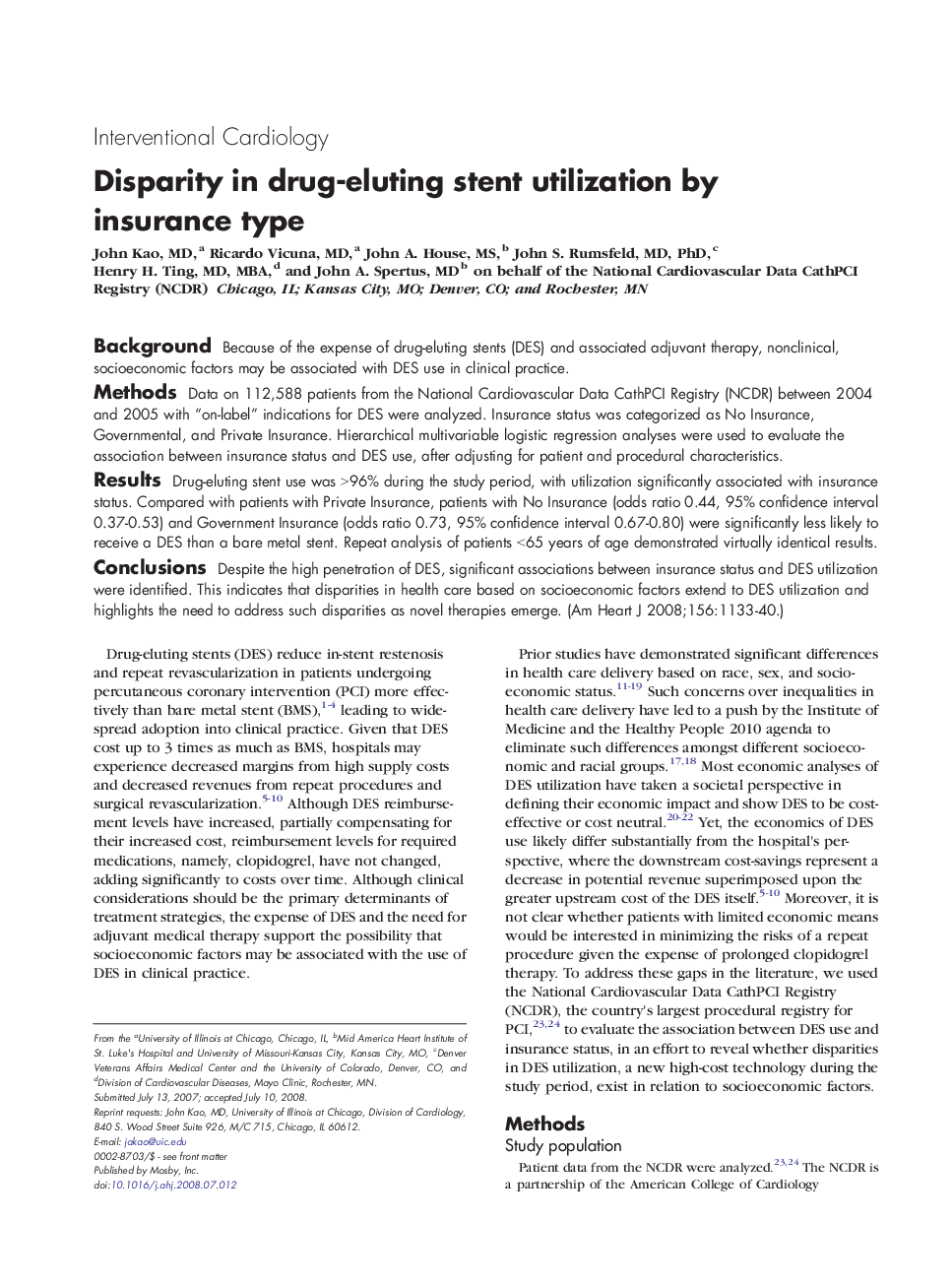| کد مقاله | کد نشریه | سال انتشار | مقاله انگلیسی | نسخه تمام متن |
|---|---|---|---|---|
| 2849829 | 1167729 | 2008 | 8 صفحه PDF | دانلود رایگان |

BackgroundBecause of the expense of drug-eluting stents (DES) and associated adjuvant therapy, nonclinical, socioeconomic factors may be associated with DES use in clinical practice.MethodsData on 112,588 patients from the National Cardiovascular Data CathPCI Registry (NCDR) between 2004 and 2005 with “on-label” indications for DES were analyzed. Insurance status was categorized as No Insurance, Governmental, and Private Insurance. Hierarchical multivariable logistic regression analyses were used to evaluate the association between insurance status and DES use, after adjusting for patient and procedural characteristics.ResultsDrug-eluting stent use was >96% during the study period, with utilization significantly associated with insurance status. Compared with patients with Private Insurance, patients with No Insurance (odds ratio 0.44, 95% confidence interval 0.37-0.53) and Government Insurance (odds ratio 0.73, 95% confidence interval 0.67-0.80) were significantly less likely to receive a DES than a bare metal stent. Repeat analysis of patients <65 years of age demonstrated virtually identical results.ConclusionsDespite the high penetration of DES, significant associations between insurance status and DES utilization were identified. This indicates that disparities in health care based on socioeconomic factors extend to DES utilization and highlights the need to address such disparities as novel therapies emerge.
Journal: American Heart Journal - Volume 156, Issue 6, December 2008, Pages 1133–1140